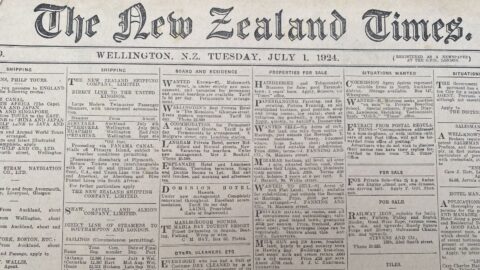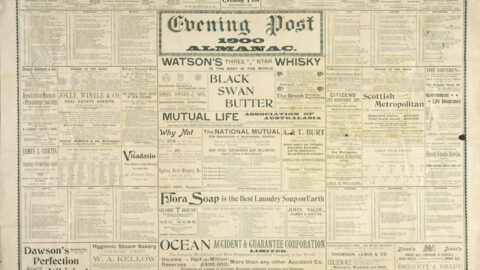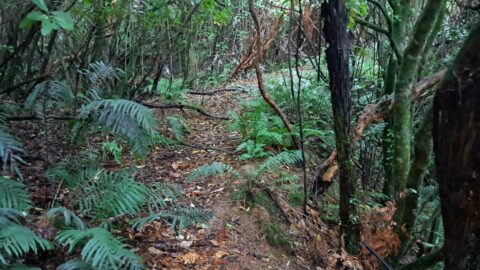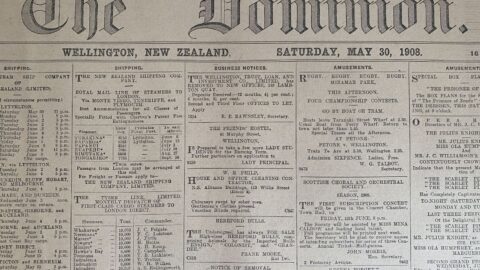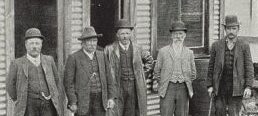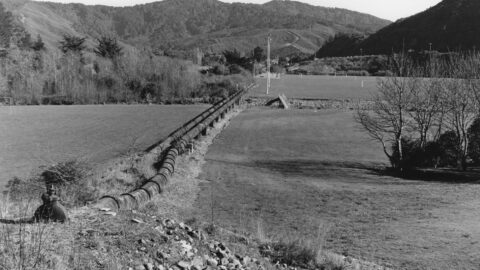The Accident to the Wainui Waterworks
The official visit of the City Councillors to the scene of the Wainui-o-mata disaster took place yesterday, instead of today as arranged. The regular official party comprised the Mayor, Councillors Richardson, Maginnity, Danks, and McKenzie, with the Town Clerk, the Acting City Engineer, and some subordinate officers of the Engineer’s Department. Another party of inspection also went out independently, consisting of Councillor Petherick, Mr. Petford, and Mr. McKeever.
The scene of the catastrophe was duly viewed and the work closely examined by the visitors, who returned to town in the evening. The impressions created in the minds of the Councillors seem to have been – first, that the destruction has been even more serious and complete than was supposed; and secondly, that, whether the work were technically in accordance with the specifications or not – which, of course, is purely a question for professional experts – it assuredly was not of so substantial a character as was necessary in view of the strain certain to be imposed upon it, even irrespective of abnormal floods, such as that of last Tuesday.
In the first place, a grave mistake was admittedly committed in assuming the solidity of the peninsular tongue of land which practically forms a material part of the dam. It was taken for granted, judging from external appearances, that this consisted of solid rock throughout, but so far as we can learn, this theory was never verified by boring. The thing was simply taken for granted, and a mere thin facing wall of concrete set up to intercept any possible percolation. It turns out, however, that the peninsula upon whose solidity so much depended was a mere mass of separate boulders, earth, etc., which became swiftly disintegrated at the first ingress of water, although it had been consolidated into a mass sufficiently solid to retain a perpendicular face on each side of the huge channel some 40 yards long, 30 feet wide, and 35 feet deep, cut through the peninsula by the flood.
It has already been explained in these columns that the first inroad was made by the torrent through the filled-up flume previously cut by the contractor to lower the water while he was finishing the dam. That flume is said to have been unauthorized. At all events, it added a fresh element of weakness to the deceptive formation on which hung the safety of the work. Here, then, we have two factors of weakness – the intrinsic want of solidity on the part of the ground and the breach made in it by the flume.
A third has to be added. The quality of the cement of which the facing wall is constructed has been the subject of much unfavourable comment. Specimens have been shown to us by Councillors Richardson and Petherick. Without professing to pass judgment on so strictly technical a question, we may state that the concrete readily crumbled to pieces between the fingers, and this not only in the case of that taken from the places where it was alleged to be “green,” but also from the wall, where it is known to have been in position more than six months. The coping of the wall could be broken off readily with fingers, and the concrete part above the surface of the ground seemed equally friable. It is for engineers to say whether this was according to specification, but it is abundantly manifest to anybody that the strength was utterly inadequate.
Councillor Petherick contends that a fourth element of weakness existed in the fact that the vertical end of the wall in Mr. Bayliss’s contract abutted against the end of the wall in Mr. Sinclair’s contract, without the two walls being so connected together as to become one continuous structure, and he asserts, as a practical builder, that this lack of continuous strength assisted to bring about the destruction of the wall. That, too, is a matter for experts to decide.
The present situation is that the whole body of the river is now flowing through the chasm it has cut through the tongue or peninsula. As to the dam proper, there is little to add to what we published on Thursday. We then described very fully the nature of the damage and the various theories set up to account for it. It may be added, however, that in this case also the quality of some of the concrete is called into question.
No reliable estimate is yet practicable as to the cost of repairs. The Acting City Engineer puts it roughly at £1500 to £2000. The Councillors formed various opinions, which, being those of unprofessional men, are, of course, of no value. Some outsiders, engineering experts, freely express the opinion that the work will not be rendered permanently safe and durable, except at a further expenditure of £15,000 or £20,000; but we can only hope this may prove an exaggerated estimate.
Councillor Petherick has pointedly called our attention to what he deems the dangerous exposure of some miles of concrete fluming (through which the water is conveyed to the main) to landslips, which he maintains may at any time cause the destruction of the flume and the stoppage of the supply.
Tags: Floods Newspaper Sinclair Waterworks
